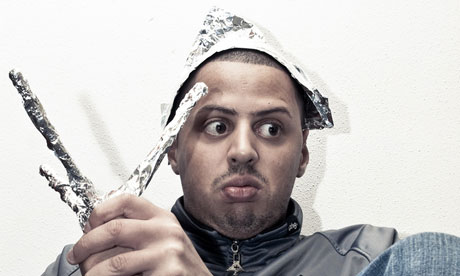The Guardian, el periódico inglés, tiene una sección llamada Ask Jack donde los lectores consultan sobre temas varios. Esta respuesta en particular me pareció simpática. Esto es lo que Jack Schofield responde sobre los supuestos efectos sobre la salud causados por la transmisión de datos vía Wi-Fi:
you could connect your computers and other devices together using Cat5e cable. This will eliminate your Wi-Fi while also improving the speed and reliability of your internet. Of course, you will still be receiving mobile phone and Wi-Fi signals from neighbours, local mobile phone masts, and distant radio and TV stations. To eliminate some if not all of these, you would need to construct a Faraday cage, which is basically an inside-out microwave oven (it keeps microwaves out instead of keeping them in). Aluminium foil works as a simple Faraday cage, and you can test this by wrapping a mobile phone in foil and then dialling it from another phone. If you get "unobtainable", it worked. I expect a few people have taken this further and wallpapered whole rooms with aluminium foil, though the so-called "tinfoil hat" is a more economical alternative. This also protects you from telepaths.
As my colleague Charles Arthur once pointed out here, the wavelength of Wi-Fi signals is the same as the cosmic background radiation: 12cm. If you're worried, don't go outside.
Since radio waves follow the inverse square law – like light, sound and gravity – then each time you double the distance, you get only a quarter of the energy. In other words, the signal strength falls off very rapidly. At normal operating distances, Wi-Fi's intensity is generally so low that it's not worth worrying about: it's just part of the "smog" that is generated by radio and TV signals, AC mains wiring, the motors in home appliances, and the universe in general.
Copiado de Wi-Fi: are there any health risks?



No hay comentarios.:
Publicar un comentario